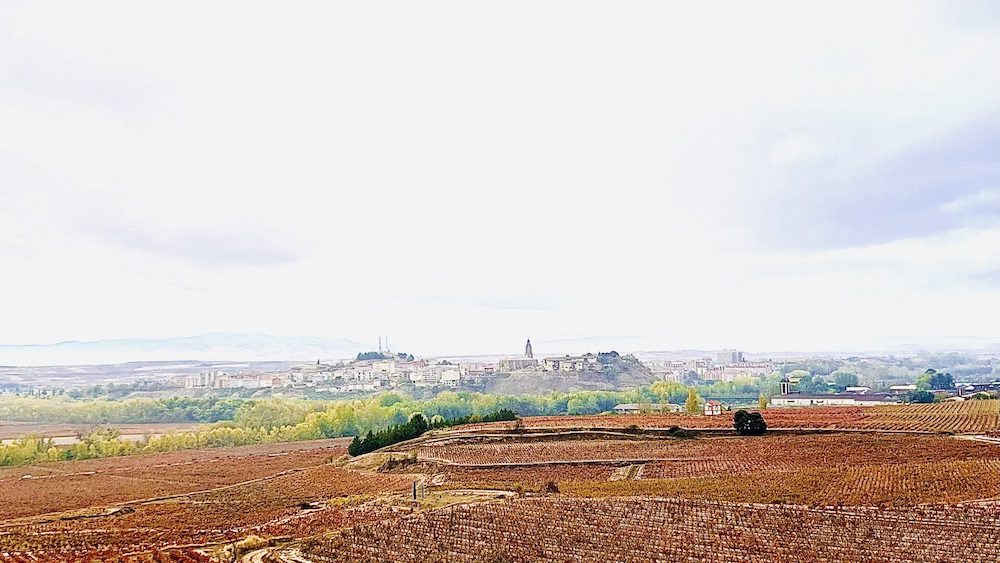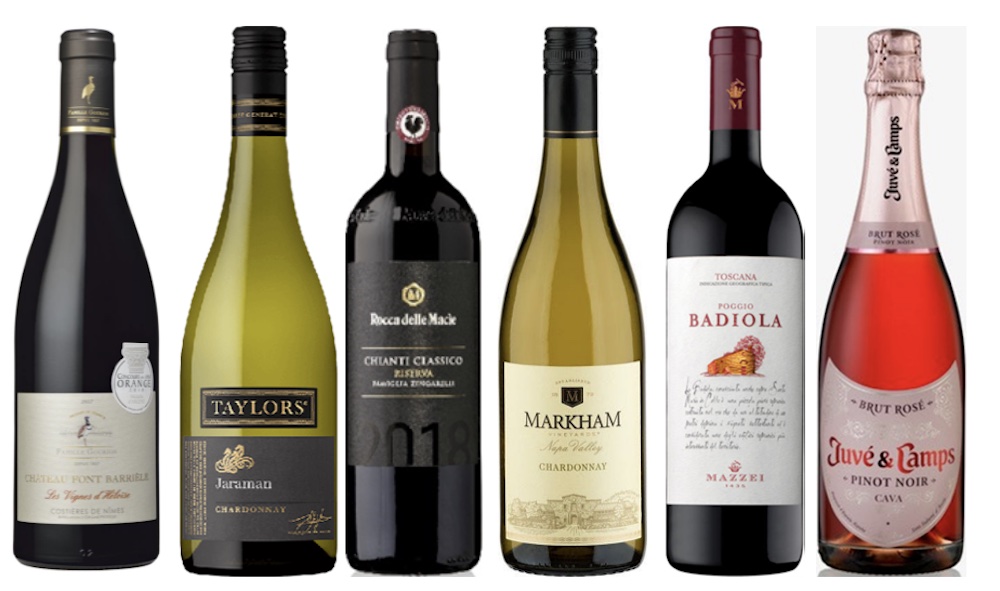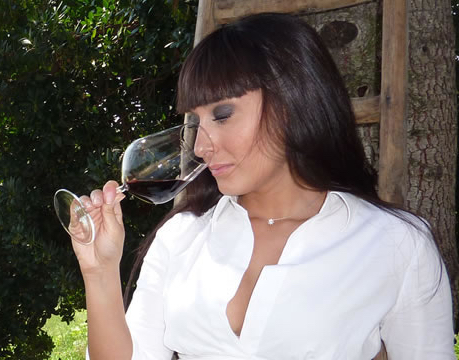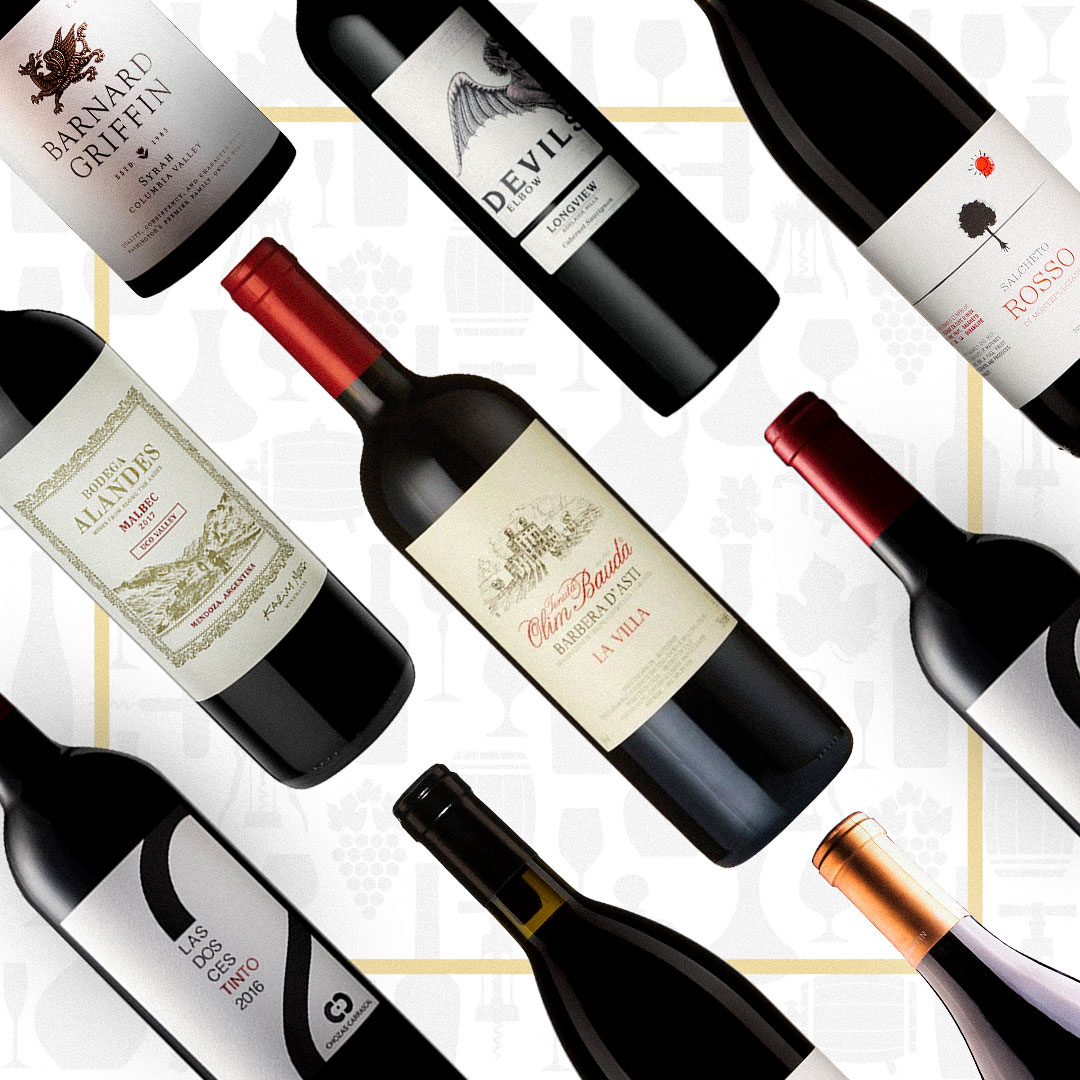Rioja is relatively well-known amongst wine enthusiasts in Canada. Walk into any of the many LCBO stores in Ontario, for instance, and the Spanish wine section is dominated by bottles from the region. This fame is largely associated with a single style of wine though: red wines aged for long periods of time in American oak. How much do we understand about the historic milieu out of which this admittedly exquisite expression of the region emerged? Is there more to Rioja wine than these iconic, age-worthy blends?
Last November, I was part of a group of wine professionals hosted for a week by the Rioja DOCa (a DOCa is the highest designation of origin awarded to wines and other agricultural products in Spain. The Rioja DOCa is managed by the Consejo Regulador de la DOCa Rioja, which I shall refer to as the Consejo from now on. You can read more about it here). We spent a week in Logroño, the capital of the autonomous community of La Rioja, attending educational seminars and wine tastings during the day and visiting tapas bars to try local food and wine whenever we could in the evenings. The Consejo also organized trips across the length and breadth of the region, giving us the opportunity to talk to a range of producers, from cooperatives to large, historic wineries, all with varied philosophical and aesthetic approaches to viticulture and winemaking. When our time with the Consejo was up, I stayed on for an extra week, exploring the region on my own.
During my travels in Rioja, I was moved by the region’s natural beauty, rich history, and culture. Learning about the region and its viticultural and winemaking practices has added texture and nuance to my understanding of its wines, and my hope is that your own appreciation of Rioja wine might also evolve as you experience parts of my trip vicariously.
The Landscape, Topography, and Soil
My Rioja adventure began as we drove to Logroño from Madrid and I caught my first glimpse of some of the region’s breathtakingly beautiful topography. It was an arresting picture composed of rust-coloured hillsides alternately splashed with green and chequered with vineyards painted in vibrant autumnal hues, all of it made even more striking by a backdrop of pristinely white, snow-capped mountain tops.
Rioja is a region of mountains and rivers. The river Ebro flows through its centre, flanked by three major mountain ranges: the Sierra de Cantabria in the north, the Sierra de La Demanda and the Sierra de Cameros in the south. There are also seven tributaries of the Ebro that etch the landscape with a series of valleys, creating their own unique terroirs along the way. Three types of soils dominate in the region: clay-limestone, ferrous-clay, and alluvial soils, each imparting certain qualities to the grapes growing in them.
Based on these topographical features, the region is divided into three broad zones: Rioja Alavesa in the northwest, Rioja Alta, mainly to the south of the river Ebro and the west of Logroño, and Rioja Oriental to the east of Logroño. The topography, climate, and soils are quite varied even within these sub-zones, however, and it is difficult to make generalisations about them. So much so that some experts have argued in favour of re-mapping and dividing Rioja into a larger number of sub-zones (if you are curious about this, you can read Rioja Vinos Silenciosos by Alberto Gil and Antonio Remesal Villar, in which the authors propose dividing the region into 8 sub-zones based on geo-climatic and historical parameters, as also Ferran Centelles’ piece on their approach).
The Relationship between Wine and Food
A couple of hours into our drive in from Madrid, we stopped for our first meal in Rioja—lunch at a little roadside restaurant in the mountains. Though the establishment was unassuming and seemed to serve only a small community of people who lived in the village nearby, it had a relatively wide selection of wines. The server recommended two different reds (both crianzas; you can read more about crianza here) to pair with the local cheese called Idiazabal that we ordered. This was something that happened repeatedly on the trip—no matter how small a café or bar we visited, it seemed obvious and natural to our server to think about pairing local wine and food together in a meaningful way. While we enjoyed both wines, the cheese, which is made of raw sheep’s milk and tastes slightly nutty and pleasantly smoky, paired better with the lighter of the two crianzas, in my view.
Once we got to Logroño, I took a little nap, then joined our group as we wandered on cobble-stoned streets, exploring the town and stopping at tapas bars. On that very first night, two things struck me. First, even small bars had a robust selection of wines by the glass. Some of them had about 20-30 options! Second, each bar specialised in certain foods; one place was well-known for their mushroom croquetas, for instance, and another for their patatas bravas. The idea seemed to be to bar hop, trying each bar’s specialties with one or two of their wines before moving on to the next. Speaking of mushroom croquetas, I found they pair well with dry, crisp white Viura, while patatas bravas were delicious with light, fresh expressions of Tempranillo.
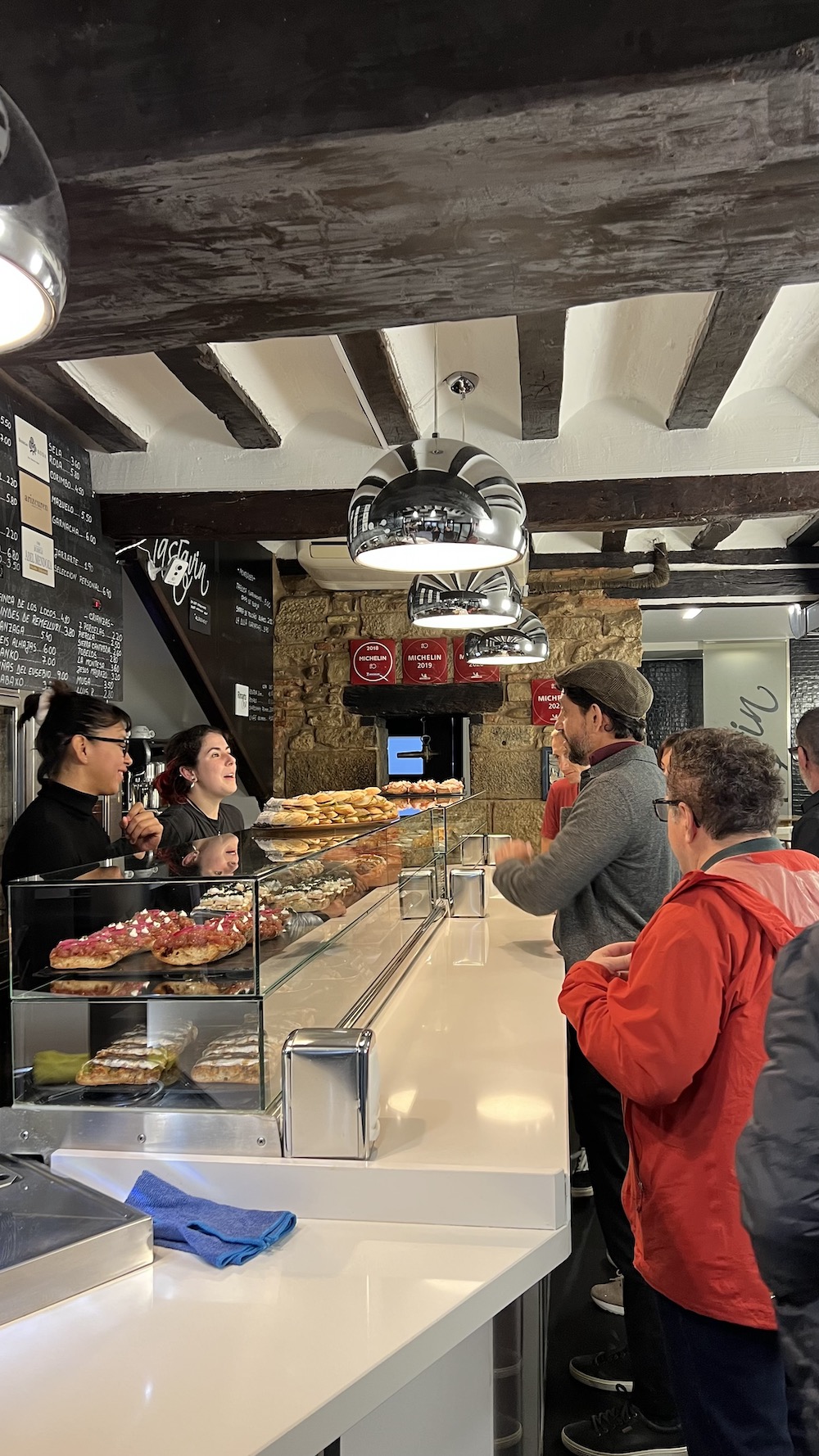
By the end of the evening, I realised that Rioja wines could be understood in a different, perhaps even fuller way, when enjoyed in the context of food. In contrast, in North America, it seems to me that we often think of wine in isolation, divorced from food, which may not always be the richest way to enjoy or appreciate it.
The Heterogeneity of Rioja Wine: From the Traditional to New Styles and Approaches
From the next day onwards, we were up bright and early each morning, attending seminars, tasting a wide range of wines, and visiting wineries and vineyards spread across the region. What I learnt through these experiences was that there really is no single expression of Rioja, though there are broad trends in styles one can discern.
Our visit to the famous town of Haro served as a study of “classical” expressions of Rioja. We spent half a day there, touring wineries, talking to winemakers, and tasting several excellent examples of traditional Rioja reds. These were Bordeaux-inspired blends of varieties, climates, and altitudes, embodying consummate balance. They were structured but elegant, layered with notes of fresh and dried red and sometimes dark fruit, framed by opulent American oak flavours. Lopez de Heredia, Bodegas Bilbaínas, and CVNE, all situated in Haro, are examples of wineries that exemplify this style (though CVNE sometimes uses a mix of American and French oak).
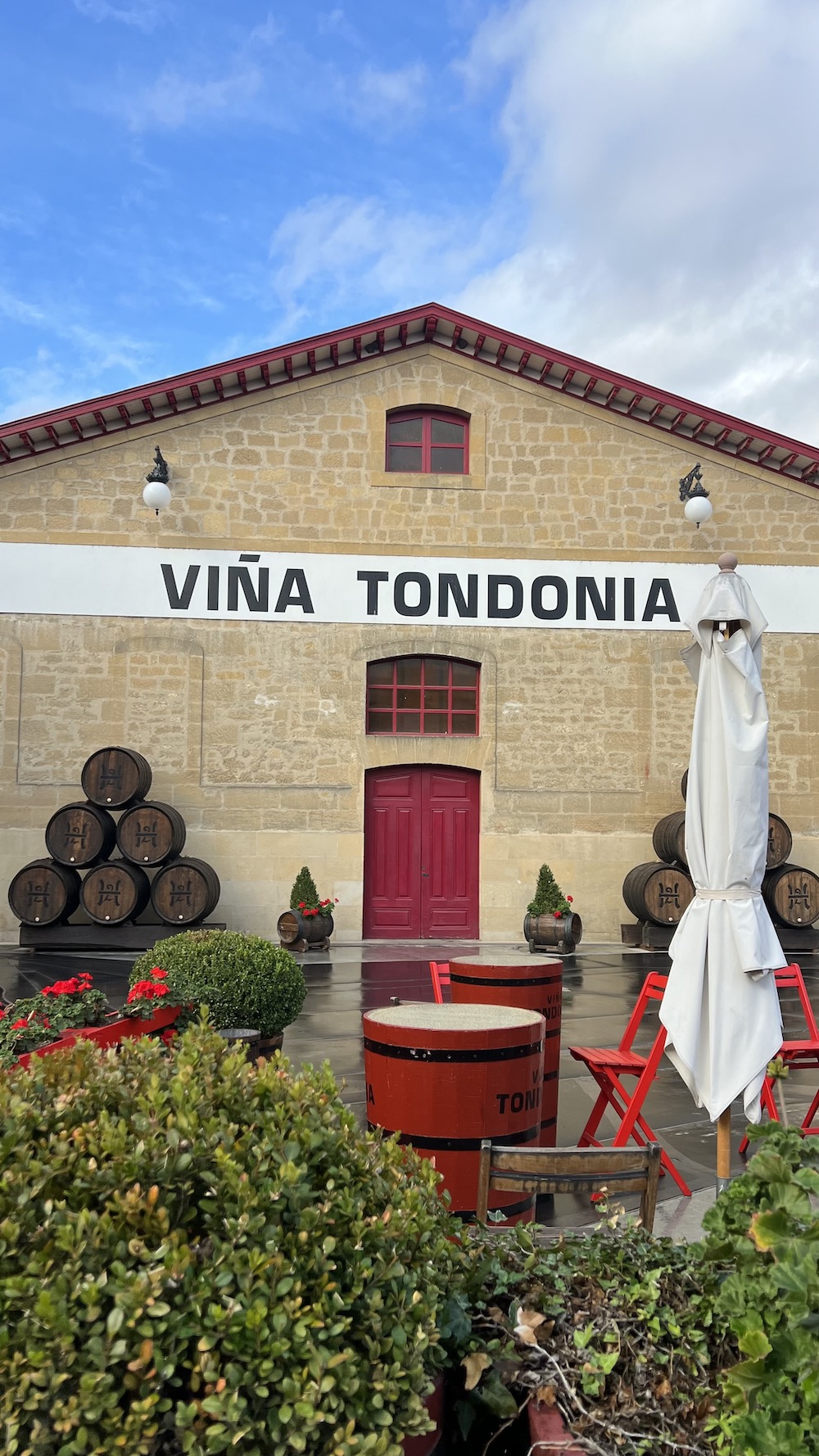
A series of events that occurred in the 18th and 19th centuries played a vital role in the evolution of this classic style of Rioja. In the late 18th century, Don Manuel Quintano, a Riojan priest, travelled to Bordeaux and studied winemaking. The Marqués de Riscal and Marqués de Murrieta followed him in the early 19th century (the Marquesses were in exile as a result of the Carlist wars). When these explorers returned to Rioja, they brought viticultural and winemaking knowledge with them and shared it with local winemakers.
From the 1840s, the influence of Bordeaux on winemaking in Rioja intensified because of the spread of two vine diseases in France. First, powdery mildew had a serious impact on many French vineyards, prompting Bordeaux wine merchants to come to Rioja to buy wine. This was followed in the 1860s by the arrival of Phylloxera, a louse that attacks vine roots. It had a devastating effect on Bordeaux, causing many of the region’s winemakers to travel to Rioja in search of fruit to make up for the shortfall they were experiencing. With them came Bordeaux techniques, including de-stemming and the use of new oak in ageing wines. A railway line was constructed that connected Rioja with the outside world, and many new wineries were established during this era in the Haro Station District, some of them by French producers. For instance, Bodegas Bilbaínas was founded by the Savignon brothers. Other bodegas in Haro include Compañía Vinícola del Norte de España (CVNE), López de Heredia, La Rioja Alta, and Bodegas Franco-Españolas. These iconic producers continue to make classic Rioja wines that represent the tradition and history of the region.
During our time in Rioja, we also visited wineries that exemplified new trends and approaches to viticulture and winemaking in Rioja. For instance, we spent several hours in the vineyards of Bodegas Bhilar. This is a small, boutique winery in the town of Elvillar in Rioja Alavesa that adopts biodynamic practices in the vineyard and focuses on sustainability and minimal intervention in the winery. They try to reduce the use of machinery in the vineyard, using horses instead of tractors. Their wines have an unassuming, natural, even pastoral charm to them. Pictured below is one of their old vines.
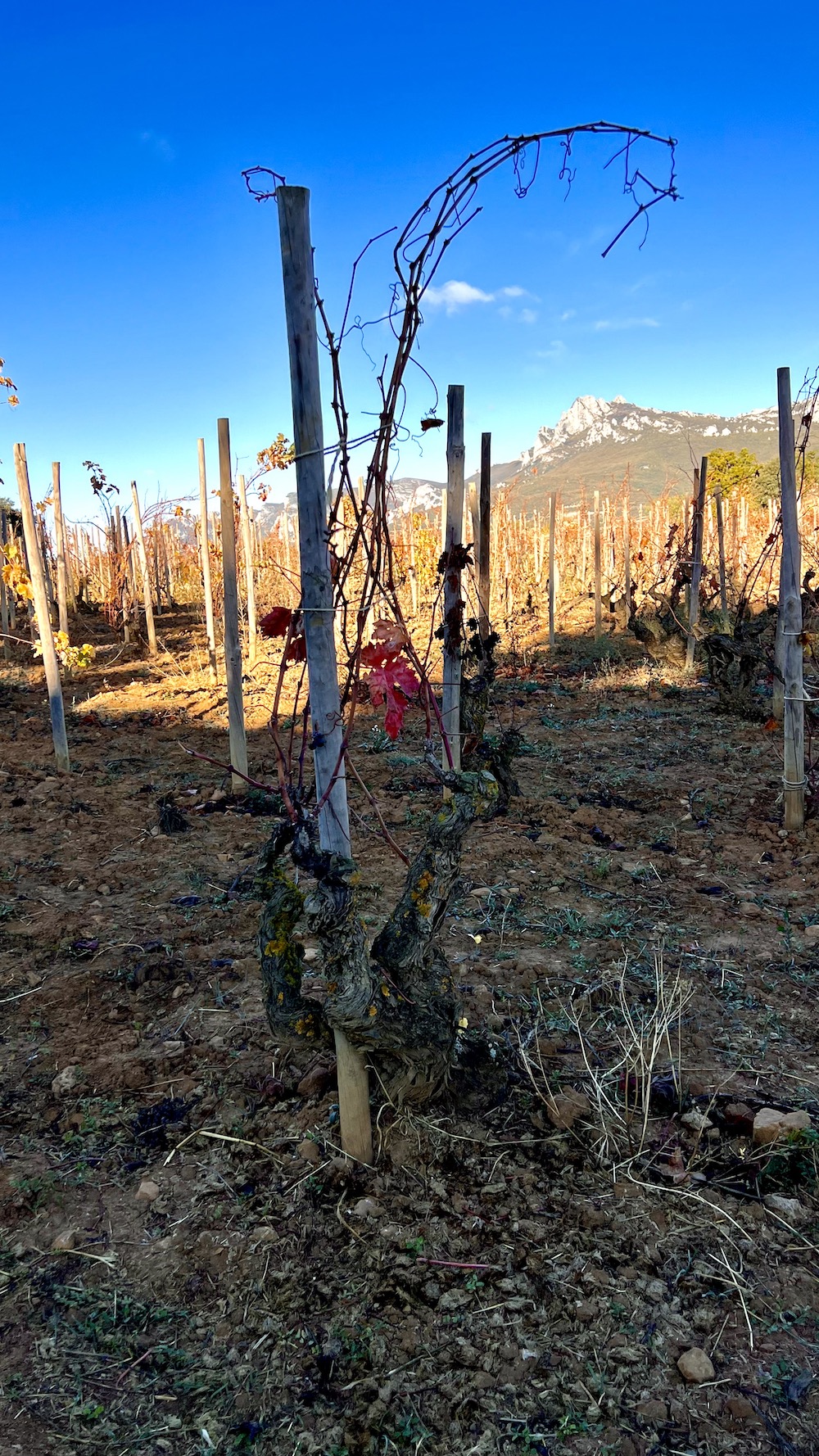
Two other developments we noticed during the many tastings in which we participated were an increase in the production of single-varietal wines and the use of new vessels for ageing. If you are curious about these two trends, Bodegas Arizcuren makes two Mazuelos that are interesting to compare. One is aged solely in amphorae, while the other is aged in oak and concrete.
Final Impressions
The river Ebro really is an apt metaphor for how I see Rioja and its wines. There is a sense of constancy and tradition in the region, but also of movement and evolution. Producers of different sizes and philosophical leanings make wine here, ranging from large-scale bodegas to smaller “artisanal” ones, from traditional wineries to those who are more avant-garde in their approach. Moreover, Rioja wines come in a multiplicity of styles. While oak-aged blends that can age splendidly have their appeal, winemakers are increasingly focusing on exploring Rioja’s spectacular terroirs and historic grape varieties individually through their wines. In fact, the Consejo has introduced a new system of classification for wines from Rioja based on their origin that includes village-level and single-vineyard wines (you can find more information about this here). Organic and biodynamic farming is also on the rise, as are fresher, lighter styles of reds, whites, and rosés. Finally, experimentation with different vessels for fermentation and ageing, including stainless steel, concrete, and amphorae, is becoming increasingly common. Travelling to Rioja was a magical experience for me, but for those of us who cannot visit or revisit any time soon, this wide range of wines offers a way to explore this mesmerisingly diverse region, if only for a few moments at a time.
*I should note that the Rioja DOCa hosted me in Logroño for a week and paid for my flight, hotel, meals, and transport during that time. Notwithstanding this, the views expressed in this article are my own and are in no way sponsored or influenced by the Consejo Regulador de la DOCa Rioja. [I should think not! – Ed.]

